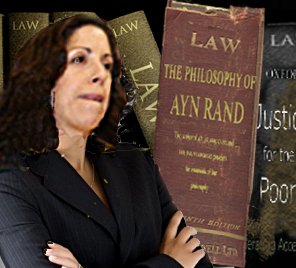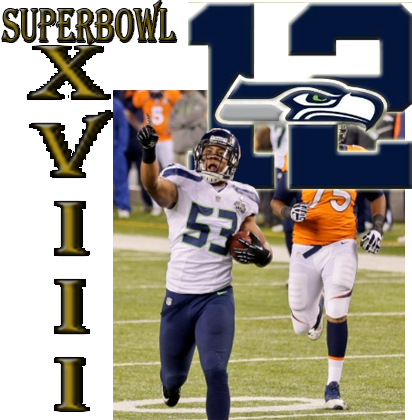A Relative of Mine Offered to Sell Me a Tape of the Superbowl: Should I report him to the FBI?
 No. Corporate lawyers use thuggery to restrict use of copyright materials. The law does not support them, but who has the money to sue the NFL?
No. Corporate lawyers use thuggery to restrict use of copyright materials. The law does not support them, but who has the money to sue the NFL?Did you know that content publishers often make false copyright claims? It’s true. The standard position of many publishers has become “we own everything, and any use we don’t approve of is illegal.”
But all too often they don’t own everything (or anything, for that matter, if work is in the public domain) and you are free under the law to make certain unauthorized and unapproved uses.
False copyright claims made through misleading copyright notices and exaggerated copyright warnings are, basically, copyright abuse. ….. The intent by the legal thugs are to frighten y9u by the prospect of your having to pay court costs. Sadly, the bar has no rules against thuggery.
False copyright claims through misleading copyright notices
Anyone can slap a copyright notice on a work. And most publishers do. In fact, they often use a blanket copyright notice, even when all or part of the work is in the public domain.
There is no legal requirement that a copyright notice state precisely what parts of a work are copyrighted. So many publishers don’t bother to make clear what part of a particular work the notice pertains to — if any.
Modern reprints of public domain works include copyright notices, probably in the hope that people will be intimidated enough to seek licenses and pay fees to reproduce these works. Which is exactly what happens, in many cases. But here’s the thing: these works are free for all of us to use.
Comparison: two modern editions of a public domain work
Adam Smith published The Wealth of Nations in 1776. There’s no question that it is in the public domain. (At least I hope no one has questions about that.) Okay then, let’s compare the copyright notices on two modern editions of this work.
Copyright notice #1
The Modern Library 1994 edition of Adam Smith’s The Wealth of Nations (ISBN 0-679-42473-3) includes this copyright notice:
Biographical note copyright © 1994 by Random House, Inc.
Helpful, yes? It’s clear that Random House is claiming copyright protection for the biographical note only. Alas, the majority of publishers don’t bother to do this.
Copyright notice #2
Here’s the copyright notice in the Elibron Classics Replica Edition of The Wealth of Nations (ISBN 0-543-94796-3), published by Adamant Media Corporation:
© 2006 Adamant Media Corporation.
According to a note on the copyright page, this is “an unabridged facsimile of the edition published in 1786, London.” So this is an exact reprint of the original work, which is in the public domain. Reprints that don’t include any creative additions or changes are not copyrightable in the US, where the publisher is located. Yet the publisher is claiming copyright, and a blanket copyright at that.
False copyright claims through exaggerated copyright warnings
Here’s a video of the National Football League’s copyright warning (with a few seconds of context) broadcast during the 2007 Super Bowl. It was posted to YouTube by law professor Wendy Seltzer, who recorded it to show her students how copyright owners exaggerate their rights.
The NFL has (so far) issued two Digital Millennium Copyright Act (DMCA) takedown notices, claiming copyright infringement. Prof. Seltzer has (so far) responded with two counter-notifications, claiming fair use.
Note: It appears that the video will stay up now, since it’s been up since April 4, 2007 of this year and I’m writing this in October.
Update (9/2012): They’re at it again … YouTube has once again taken this video down in response to a copyright claim by the NFL. Not sure what, if anything, will happen next but you can read the 2007 story here.
So what false copyright claims is the NFL making? The work is copyrighted, after all. Here the false claims have to do with your use of the NFL’s copyrighted work. This warning misrepresents US copyright law. And I bet you football fans out there know the words by heart:
This telecast is copyrighted by the NFL for the private use of our audience. Any other use of this telecast or of any pictures, descriptions, or accounts of the game without the NFL�s consent, is prohibited. (Emphasis added.)
Prohibiting any other use rules out a fair use like the one Prof. Seltzer made (educational purpose). And as to “descriptions or accounts” of the game — um, facts aren’t copyrightable. Copyright warnings like this misrepresent your rights to use copyrighted works. Any use that the copyright owner doesn’t expressly agree to, is illegal? Hogwash.
Not that this is news to you, I’m sure, but warnings like these are everywhere. Just pop in a DVD of your favorite movie and you’ll be greeted with something like this:
WARNING: Federal law provides severe civil and criminal penalties for the unauthorized reproduction, distribution or exhibition of copyrighted motion picture video tapes or video discs. Criminal copyright infringement is investigated by the FBI and may constitute a Felony with a maximum penalty of up to five years in prison and or a $20,000.00 fine.
Misleading warnings show up in print, too
It’s not only the NFL and the movie studios. My well-worn copy of The United States Constitution: And Fascinating Facts About It, published by Tiger Publishing Group, Inc. (1993), includes the following warning:
All Rights Reserved. No part of this publication may be reproduced or transmitted in any form or by any means, electronic or mechanical, including photocopy, recording, or any information storage and retrieval system, without permission in writing from the publisher. (Emphasis added.)
No part may be reproduced or transmitted? Really? Oh, behave. The original text of the US Constitution is in the public domain. Anyone may copy it — and they don’t need permission.
And if you wanted to teach from or comment on the additional copyrighted material (the “fascinating facts”, for example), you certainly could. The law not only allows it, it encourages it. But you’d never know that by reading or hearing warnings like these, would you?
Are false copyright claims illegal?
Falsely claiming copyright is a criminal offense, but it hardly matters. The fine is ridiculously small:
Any person who, with fraudulent intent, places on any article a notice of copyright or words of the same purport that such person knows to be false, or who, with fraudulent intent, publicly distributes or imports for public distribution any article bearing such notice or words that such person knows to be false, shall be fined not more than $2,500. 17 USC § 506(c).
A maximum fine of $2500? As if that’s going to deter anyone, especially big content publishers. Also, note that I said it’s a criminal offense. You and I can’t bring private actions against those who make deceitful copyright claims. It’s up to the government to enforce section 506(c) and, well, basically, it doesn’t. The same is true of charges of perjury against attorneys who knowingly misrepresent the truth, I have been told that prosecutors will nto bring such charges.
So the practice continues. Publishers intimidate people into paying fees to reproduce works that are, in fact, free for everyone to use, and discourage perfectly legal uses with little or no risk of getting caught. And even if they are caught, the price they have to pay is minuscule.
Why copyright abuse matters
When content publishers claim that everything is protected by copyright, people respond by acting as though nothing is. Misleading, threatening, and villainizing your customers is a lousy way to get them to respect your rights, but that’s precisely what’s happening now. And clearly, it’s not working. Just take a quick look around the Web — blog posts and comments reveal how tired people are of what’s often characterized as “more bullshit from the copyright nazis.”
Until the limits of copyright are enforced, and not just the rights it confers, the balance between copyright protection and public access will continue to erode. Once a work’s term of copyright protection has expired, no one should be able to claim a copyright in it, and copyright owners should stop exaggerating the rights they actually have under the law.
Further reading
For lots of eye-opening information about copyright abuse check out Copyfraud, by law professor Jason Mazzone. This paper (PDF) is available with free registration from the Social Science Research Network.
What can you do?
- Learn what the law actually says. That way you’ll be savvy enough to …
- Assert your rights. For example, if you have a Web site or blog, know how to file a DMCA counter notice. Chilling Effects Clearinghouse even has a counter-notification generator.
- Support organizations that work to protect your rights in the digital world, like Electronic Frontier Foundation.
